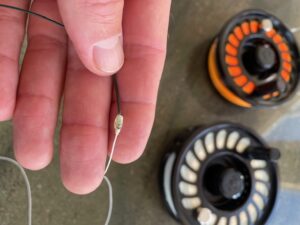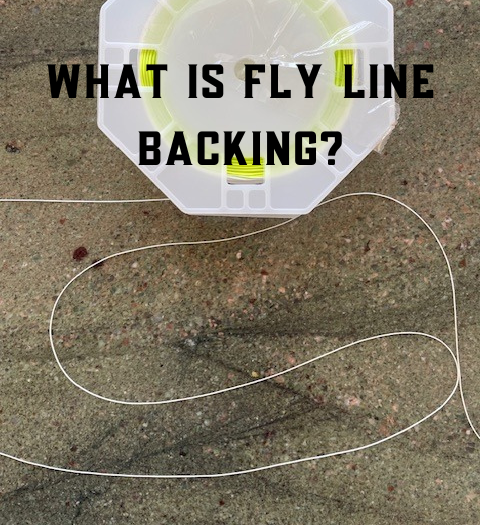This question comes up in our fly shops from time to time, “What is fly line backing and what is it used for?”
Let’s be frank, fly-fishing is complicated! Hatches, lines, tippets, mending…just casting, there is a lot going on. If you purchase a fly reel and line at any fly shop they’re going to start loading your line with this silly looking kite string. What is it and what is it for? Let’s dive in.

Backing serves as a supplementary line attached to the reel before the fly line itself. Typically made of braided Dacron or other durable materials, backing is the unsung hero that plays a crucial role in ensuring a successful fishing expedition.

At first glance, one might question the necessity of this seemingly insignificant addition. After all, the fly line alone seems to be sufficient for casting and reeling in fish. However, delving deeper reveals the multifaceted purpose of backing.
First and foremost, fly line backing serves as an insurance policy against the unexpected. When engaged in a battle with a particularly spirited fish, or when casting into waters inhabited by large and powerful species, there’s always the risk of the fish taking off and stripping line from the reel at an alarming rate. In such scenarios, the limited length of fly line alone may prove insufficient. Here’s where backing steps in, providing additional line capacity to prevent the dreaded scenario of running out of line just when victory seems within grasp.
Moreover, fly line backing acts as a buffer, safeguarding the integrity of the fly line itself. When battling a fish, the friction generated between the fly line and the reel can exert significant pressure, potentially causing abrasions or even damage to the line. By incorporating backing, anglers distribute this stress over a larger surface area, minimizing wear and tear on the fly line and prolonging its lifespan.
Beyond its practical functions, fly line backing also offers strategic advantages. By adjusting the ratio of backing to fly line, anglers can tailor their setup to suit specific fishing conditions and target species. In situations where long casts or extended fights are anticipated, a greater amount of backing provides added security. Conversely, for finesse presentations or in waters where fish are less likely to make long runs, less backing may suffice, allowing for a more streamlined setup.

In essence, fly line backing epitomizes the meticulous attention to detail that defines the world of fly fishing. Though often overshadowed by its more prominent counterparts, this unassuming component plays an indispensable role in ensuring the success and enjoyment of every angler’s pursuit. So, the next time you spool up your reel in preparation for a day on the water, remember to pay homage to the unsung hero that is fly line backing – for it may just be the difference between landing the catch of a lifetime and coming home empty-handed.

